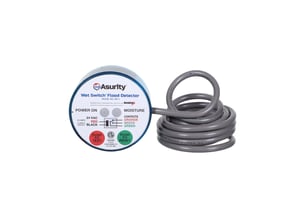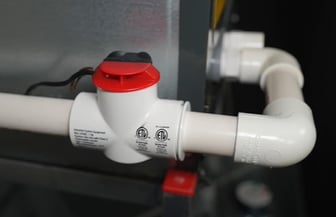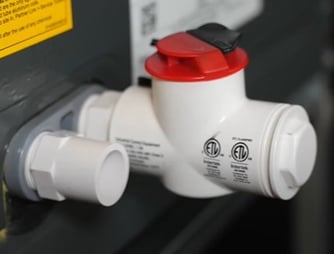During the hot summer months, your HVAC system is what does a lot of “sweating” to keep you cool. As the air conditioner cools the warm air, condensation forms and is removed either by gravity through a drain line to the outside, an inside drain, or to a condensate pump, depending on where the system is located. Condensation by itself isn’t necessarily harmful, but imagine what would happen if your drain ever clogged and the water had nowhere to go? That water would eventually flood out, causing damage to your system and, in some cases, your home as well. That’s why the condensate overflow switch is a mainstay in all properly maintained air conditioners. Read on to learn more about condensate switches and their applications.
What Is a Condensate Switch?
Based on the clogged condensate drain line scenario, the switch is what will help prevent flooding from occurring. A condensate switch is a device that shuts off your air conditioner when it detects that condensation has reached a certain level in your AC’s drain pan.
Types of Condensate Switches
Although there are many variations of switches, you can generally split them all into two categories which we'll cover below.
Float Switches
A float switch is the most common type of condensate safety switch you can install to protect your AC system. When the water level reaches a certain point, the float switch mechanism will trip and send a message to the AC unit to shut off. Your certified HVAC technician will then be able to find the source of the issue before any flooding can occur.
Sensor Switches
Another type of condensate switch is the sensor switch. This type of switch automatically turns your AC system off once it detects any moisture that may be cause by leaks or clogs.

The best example of a sensor switch is the WS-1 Wet Switch by Asurity. This sensor switch is incredibly sensitive and only takes a couple drops of water to activate. Its design makes it easy to install and allows for flexible placement options inside or outside of the drain pan.
Applications for Condensate Switches
Common applications for condensate switches include primary drain pans, secondary drain pans, and drain lines. While installing a condensate switch on the primary drain pan may be enough some of the time, there are many situations where you may want to have a condensate switch for your secondary drain pan installed. For instance, if your AC unit is located in an attic, basement, or garage space, you may have a secondary drain pan under the unit to collect any condensation that overflows from the primary drain pan inside the AC. Having the additional switch provides another layer of protection from condensate buildup.
Primary Drain Pan Switches
There are a few options to choose from when installing a switch for the primary drain pan, which sits inside the air handler.
Your first option is to attach your switch to the horizontal drain line coming from the main port.

You can also install the float switch to the secondary port from the air handler.

Another option is to install a drain pan clip switch in the primary pan, where space allows.
The CS-1 Pipe Switch by Asurity can be installed for each of these scenarios.
Secondary Drain Pan Switches
The secondary drain pan serves as a backup in case the primary drain pan fails to hold all excess condensate due to a clog or backup. Install a condensate switch in the secondary drain pan to provide an additional layer of protection for your HVAC unit and your home.
A drain pan clip switch like the Asurity CC-1 Safety Overflow Pan Switch will ensure that the AC system will shut off if the drain pan collects in the drain pan, but a Wet Switch will shut off the system immediately when any water is detected. These switches shut off the system immediately, can be placed inside drain pans, and can also be placed on the floor near your secondary pan to monitor for any flood issues before water damage occurs.
Which Condensate Switch Should I Use?
The condensate switch(es) you need will depend on a number of factors including the location and orientation or the air handler. A certified technician will be your best resource in determining the best solution. To learn more about the condensate switches as well as other condensate management products, from pump to drain pans to treatments, visit www.asurityhvacr.com.